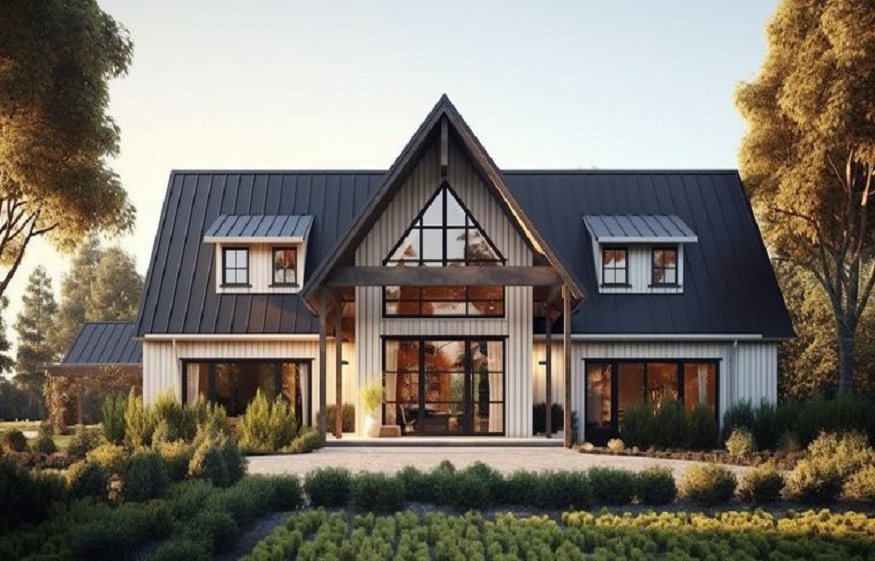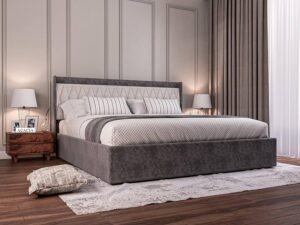Is Montana a Good Place to Live? Explore the Cost of Living and Homes for Sale
Montana is one of the fastest-growing states in the U.S., with a 1.4% annual population increase. Between 2019 and 2024, it ranked third nationwide for growth. From the peaks of Glacier National Park to the lively streets of Billings and Missoula, Montana blends outdoor adventure with expanding career opportunities, attracting newcomers from across the country. Let’s explore more about the Treasure State.
What Makes Montana Special?
From thriving cities to quiet rural communities, the state offers breathtaking landscapes and a welcoming community spirit, making it a unique place to call home. Here’s what stands out:
- Scenic Beauty: Home to the Rocky Mountains and smaller ranges, offering stunning views across the state.
- Outdoor Lifestyle: Popular year-round activities include hiking, fishing, hunting, skiing, and camping.
- Seasonal Recreation: Summers are great for exploring and camping, while winters bring excellent opportunities for snow sports.
- Community Spirit: Close-knit towns where neighbors look out for each other, creating a safe and welcoming atmosphere.
- Small-Town Charm: Many communities retain an old-fashioned feel, with local businesses offering personal connections.
Montana’s Job Market and Economy
Montana’s economy offers a mix of traditional industries and modern opportunities, making it appealing for both residents and newcomers. Here’s a quick overview:
- Diverse Industries: Farming and ranching remain important, but technology, healthcare, and tourism are growing rapidly.
- Energy Sector: Jobs in oil and natural gas provide well-paying employment opportunities.
- Employment & Wages: Unemployment generally stays below the national average, but wages are often lower than in coastal cities.
- Cost of Living Balance: Lower living costs in many areas help offset smaller paychecks.
- Remote Work: Increasingly popular, allowing residents to earn higher salaries while enjoying Montana’s lifestyle.
Cost of Living in Montana
The cost of living in Montana is about 21% higher than the national average overall, though certain expenses, like utilities and healthcare, remain below or near average. Here are the main costs you should plan for when living in Montana:
- Housing (Buy and Rent): Around 3% higher than the national average.
- Utilities: About 8% lower than the national average.
- Groceries: Roughly 3% higher than the national average, but food is affordable, especially at local farmers’ markets in summer.
- Clothing: Around 60% higher, one of the state’s biggest cost challenges; many shop online or in larger cities.
- Transportation: Around $3.24 per gallon, close to the national average, and reasonable compared to coastal states.
- Healthcare: Varies by location, but generally reasonable (about 2% higher than the national average).
Housing Market
Montana’s housing market continues to shift, with rising prices but still more affordability compared to many coastal states. Here’s a quick snapshot:
- Median Home Price: $541,100, higher than the U.S. median of $443,019.
- Regional Differences: Bozeman and parts of Flathead Valley are expensive, while smaller towns and rural areas remain more budget-friendly.
- Affordability: Despite statewide growth, several Montana cities are often priced below the national average.
- Inventory: With an average 5-month supply, homes stay on the market for about 68 days.
Montana’s mortgage calculator helps you estimate monthly costs, factoring in taxes, insurance, and HOA fees, so you can budget smarter and move closer to your ideal home. Platforms like Houzeo- America’s best home buying website feature extensive listings for prospective buyers.
Rental Market Trends
Montana renters are facing steep price hikes, far outpacing the national average. Here’s what to know:
- Sharp Rent Growth: Rents are projected to rise 20.7% in 2025, compared to the 4.8% national average.
- Average Cost: Statewide, the average rent is about $1,949 per month.
- Bozeman Surge: Bozeman leads the trend with a 37.4% year-over-year increase, making it the most expensive rental market in the state.
- Regional Differences: Smaller towns still offer more affordable rents, while high-demand areas remain costly.
Best Places to Live in Montana
Bozeman
Home to Montana State University, Bozeman combines a small-town feel with big-city amenities, attracting students, young professionals, and families. Key highlights include:
- Housing Market: Median home price is $789,000, while average rent is $2,250. It’s one of the most expensive places in Montana due to high demand; historic homes and modern builds are available.
- Job Market: The growing tech industry and other employment opportunities attract professionals.
- Lifestyle and Recreation: Vibrant downtown, excellent restaurants, cultural events, and year-round outdoor activities like skiing, hiking, and biking.
- Neighborhoods: Education-focused and family-friendly areas with parks and community amenities.
Missoula
Home to the University of Montana, Missoula blends university culture with arts and career opportunities, offering a lively yet scenic place to live. Key highlights include:
- Housing Market: Average home price is $597,000, while average rent is $1,795. Moderately priced compared to Bozeman; historic homes and newer developments available.
- Job Market: The education and growing healthcare sectors provide stable employment.
- Lifestyle and Recreation: Local music venues, art galleries, theaters, and abundant outdoor activities in a mountain valley setting.
- Neighborhoods: Diverse, youthful, and walkable areas, ideal for students and families alike.
Kalispell
Kalispell offers a small-town atmosphere with strong economic growth, appealing to families, retirees, and remote workers alike. Key highlights include:
- Housing Market: Average home price is $533,000, while average rent is $2,150. Moderately priced homes, though demand is rising due to population growth.
- Job Market: Local economy driven by tourism, healthcare, and energy; major employers include Logan Health and Glacier Bancorp.
- Lifestyle and Recreation: Outdoor activities abound, including hiking, fishing, skiing, and access to Glacier National Park. Cultural events and local festivals add to community life.
- Neighborhoods: Family-friendly and safe, with both suburban developments and historic districts near downtown.
Helena
Helena combines Montana’s small-town charm with the amenities of a state capital, offering history, culture, and government-related employment. Key highlights include:
- Housing Market: Average home price is $447,000, while average rent is $2,000. Generally affordable, with a mix of historic homes and newer developments.
- Job Market: Strong government sector, healthcare, and education opportunities; major employers include St. Peter’s Health and Helena School District.
- Lifestyle and Recreation: Historic sites, local museums, community events, and nearby outdoor recreation like hiking and fishing.
- Neighborhoods: Quiet, safe communities with easy access to schools, shopping, and parks.
Billings
Billings is Montana’s largest city and economic hub, offering urban amenities, diverse career opportunities, and a relatively affordable lifestyle compared to other major Montana cities. Key highlights include:
- Housing Market: Average home price is $389,700, while average rent is $1,462. More affordable than Bozeman and Missoula, with a mix of suburban and city options.
- Job Market: Strong employment across healthcare, logistics, education, and corporate services.
- Lifestyle and Recreation: Access to recreational activities, cultural amenities, and easy travel to explore Montana’s natural beauty.
- Neighborhoods: Family-oriented communities with good schools, shopping, and dining options.
Climate and Weather Considerations
Montana’s climate impacts both lifestyle and housing needs, making it important for buyers to plan.
- Cold Winters: Northern areas face subzero temperatures and heavy snow, so homes with good insulation, efficient heating, and garages are highly valued.
- Winter Appeal: Ski resorts, snowboarding, and winter recreation make certain regions popular for vacation and second homes.
- Warm Summers: Comfortable temperatures and low humidity reduce cooling costs, adding to Montana’s affordability compared to hotter states.
- Unpredictable Spring & Fall: Rapid weather shifts highlight the importance of durable roofing, drainage systems, and flexible outdoor spaces.
Transportation and Infrastructure
Getting around Montana can be challenging because of its vast size and largely rural landscape. Most residents depend on personal vehicles since public transportation is limited to larger cities. Gas prices generally stay close to the national average, making driving more affordable compared to coastal states.
Road conditions are usually well-maintained, but winter snow and ice can create hazardous travel, especially in remote areas where many roads are gravel and maintenance services are limited. For this reason, vehicles equipped with snow tires or all-wheel drive are highly recommended during the winter months.
Final Thoughts: Is Montana Right for You?
Montana offers an incredible lifestyle for people who love nature and outdoor activities. The state’s friendly communities and beautiful scenery attract many newcomers each year. However, rising housing costs and limited job markets in some areas create challenges for potential residents.
Consider your priorities carefully before moving. If you value outdoor recreation, small communities, and natural beauty, Montana could be the perfect fit. The state works best for people with flexible jobs, retirees, or those in specific industries like healthcare, education, or agriculture. With proper planning and realistic expectations, Montana can provide an amazing quality of life.
Looking for Montana homes for sale that give you the perfect blend of city amenities with the spacious living of the suburbs? Find them on the go on your mobile device with the best home buyer app in America. Download the Houzeo mobile app from the Apple App Store or the Google Play Store for free.











Post Comment
You must be logged in to post a comment.